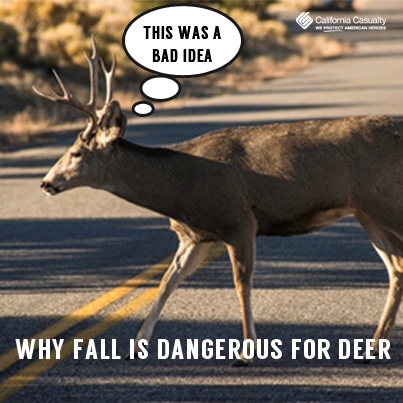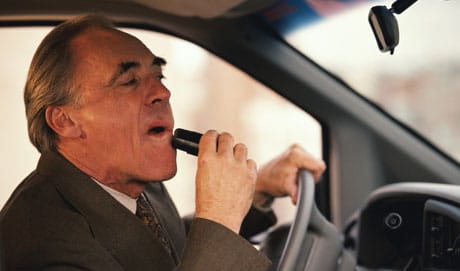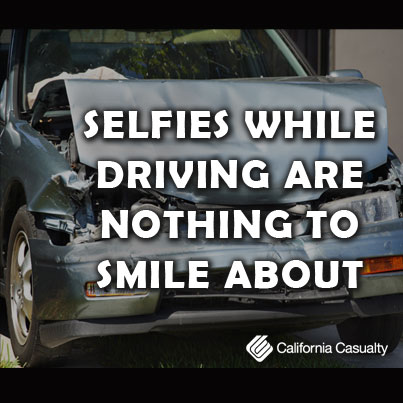by California Casualty | Safety |

Protecting our children is a concern for every parent. For many of us, how to keep our kids safe once they get a driver’s license is a real dilemma; we want the safest vehicle that we can afford but often our budgets are limited. Thanks to the Insurance Institute for Highway Safety, finding a safe vehicle at a reasonable price is a little easier.
Using crash test data, the IIHS has released their latest list of recommended vehicles for teen drivers. There are about 150 vehicles on this year’s list with the majority of them costing under $10,000. All of the “Best Choice” vehicles have good ratings in the Institute’s moderate overlap front, side, roof strength and head restraint tests, and if they were rated by the National Highway Safety Administration they had 4 or 5 stars. For the first time this year’s list also included pickups.
The Best Choices were broken down by size, model year and price. The following are the top three in each category (except pickups which only had two):
Large cars:
- Volvo S80, 2007 and newer (price $5,800)
- Ford Taurus, 2010 and newer (price $10,900
- Buick LaCrosse, 2010 and newer (price $11,300)
Midsize cars:
- VW Jetta Sedan and Wagon, 2009 and newer (price $5,600)
- Volvo C30, 2008 and newer (price $7,000)
- VW Passat Sedan, 2009 and newer (price $7,300)
Small SUVs
- Honda Element, 2007-11 (price $6,700)
- VW Tiguan, 2009 and newer (price $7,900)
- Subaru Forester, 2009 and newer (price $9,000)
Midsize SUVs
- Volvo XC90, 2005 and newer (price $4,600
- Subaru Tribeca/B9 Tribeca, 2006 and newer (price $6,000)
- Dodge Journey, 2010 and newer (price $8,700)
Large SUVs
- Chevrolet Traverse, 2011 and newer (price $13,500)
- GMC Arcadia, 2011 and newer (price $15, 400)
- Buick Enclave, 2011 and newer (price $16,100)
Minivans
- Dodge Grand Caravan, 2012 and newer (price $11,600)
- VW Routan, 2012 and newer (price $11,800)
- Toyota Siena, 2011 and newer (price $13,200)
Pickups
- Toyota Tundra Crew Cab (double cab), 2007 and newer (price $12,200)
- Ford F-150 Crew Cab (super crew), 2011 and newer (price $16,800)
The list has a secondary tier of “Good Choices” priced under $10,000 that have less than perfect crash test ratings.
*See the entire list of recommended used vehicles for teen drivers here.
The IIHS also urges parents who don’t find a suitable vehicle from the list to seek a midsize or larger car, SUV or minivan with the most safety features they can afford. They also recommend:
- Young drivers should stay away from vehicles with high horsepower
- Bigger, heavier vehicles protect better in a crash (no minicars are small cars made their list)
- ESC traction control is a must
Keep in mind, adding a teen driver will increase your auto insurance rates, in some instances more than doubling them. Here are some tips to help manage those insurance costs for teen drivers:
- Purchase cars that have modern safety features
- Take advantage of good student discounts
- Enroll in a defensive driving course
- Try to cut their driving miles by carpooling or using mass transit
- Stick to lower horsepower vehicles
- Find an insurer who treats teens as responsible drivers
California Casualty also understands what it is like to have a new driver. Like parents, we have a commitment to the safety of teen drivers. We’ve partnered with law enforcement agencies, safety groups, educators and concerned parents to create and fund Impact Teen Drivers, an intensive campaign to inform young drivers about the dangers of distracted or reckless driving. The nonprofit provides training and powerful tools to help engage teen drivers and change their attitudes behind the wheel.
Every young driver should have the best insurance possible. California Casualty offers some of the best teen driver rates in the industry, along with good student discounts. Make sure your student driver is fully protected by calling a California Casualty advisor today and talking through your options at 1.800.800.9410 or by visiting www.calcas.com.
Sources for this article:
https://www.iihs.org/iihs/sr/statusreport/article/50/8/1
https://www.calcas.com/impact-teen-drivers
by California Casualty | Safety |

“It came out of nowhere!” That’s what a friend said after he hit a deer as he drove to our house last year. The impact tore off his grill and front bumper; who knows if the animal survived. My friend was lucky; he was shaken up after the accident but unhurt. Little did he know that he was one of hundreds of thousands who have an unfortunate meeting with deer every year.
Deer-vehicle collisions can happen any time of year but fall is particularly bad. Crashes with them spike October through December as they seek new habitats to breed and forage for food.
Be especially careful if you live in a rural area or one that is near deer habitat; the Insurance Institute for Highway Safety estimates more than 1.5 million deer collisions take place every year in the U.S., causing over $1 billion in vehicle damage. The top five states for deer-auto crashes are:
- West Virginia
- Montana
- Iowa
- Pennsylvania
- South Dakota
These are things you can do to reduce your risk of hitting deer or other wildlife while driving:
- Don’t drive distracted
- Slow down
- Use high beams at night when there is no oncoming traffic
- Stay especially alert at dusk and dawn when deer tend to be most active
- Watch for road signs warning about wildlife
- Honk your horn to scare any deer you encounter off the road
- Break firmly and don’t swerve
If all these fail and you collide with a deer:
- Attempt to move your vehicle to the side of the road and use your hazard lights
- Call local law enforcement or the state patrol
- Don’t attempt to move injured animals
- Take photos of the animal, the damage to your vehicle, and the roadway where the crash occurred
- Contact your insurance company as soon as possible
Damage from striking deer and other wildlife is one of the things comprehensive auto insurance coverage helps pay for. Make sure you have adequate protection if you encounter a deer, contact a California Casualty advisor today for a free policy comparison and review at 1.800.800.9410, or visit www.calcas.com.
Sources for this article:
https://www.propertycasualty360.com/2015/10/12/oh-deer-drivers-beware-its-deer-season?page_all=1
https://www.iihs.org/iihs/sr/statusreport/article/49/9/3
by California Casualty | Safety |

By: Mark Goldberg
I couldn’t believe it (well, then again nothing is that surprising these days) – the guy in the car ahead of me was shaving. It was early morning as we drove on a narrow two-lane road. He swerved numerous times as he continued grooming behind the wheel. It could have ended badly since there were school buses and elementary school children on the side of the road; luckily nobody was hit or hurt. The sad part is that he was oblivious to how dangerous his antics were.
Then, on a recent trip to visit our daughter, my wife and I witnessed drivers passing on the far right on the interstate, wildly veering across three lanes and then back to the left lane. Others were tailgating at such a high speed that there was no way they would avoid slamming into the car ahead if traffic suddenly came to a stop.
We’ve all seen it; people with angry faces, often gesturing, as the careen through our thoroughfares as if they were the only one who mattered. As we encounter the growing number of distracted and aggressive drivers, it got me thinking about how we all need to be hyper-aware and drive with extra precaution.

So, what can you do?
- Stay out of the left lane unless you are passing
- Don’t challenge them by speeding up or trying to block them
- Follow the speed limit
- Avoid eye contact
- Report them to authorities providing vehicle description, license plate number, location and direction of travel
Gesturing back or making eye contact can often lead to road rage.
And here are some defensive driving tips that can help you avoid confrontations with aggressive drivers:
- Keep scanning the area ahead and behind you
- Drive with both hands on the wheel to better respond to dangers
- Wear your seatbelt
- Slow down in bad weather
- Have an escape plan
- Don’t follow too close
- Avoid driving when tired or drowsy
Experts recommend that you take a defensive driving course to learn these techniques; besides it can also qualify you for a discount on your auto insurance.
California Casualty is dedicated to preventing this type of driving behavior. That’s why we are proud to be a major sponsor of Impact Teen Drivers, a nonprofit formed with the law enforcement and education groups that uses peer-to-peer tactics to educate teen and young adults about the dangers of distracted and reckless driving. Learn more at https://www.calcas.com/web/ccmc/impact-teen-drivers.
Before you hit the road, make sure you have adequate protection in case you encounter a distracted or aggressive driver. Call a California Casualty advisor today for an auto policy review or comparison at 1.800.800.9410 or visit www.calcas.com.
Sources for this article:
https://www.nhtsa.gov/people/injury/aggressive/Aggressive%20Web/index.html
https://www.nhtsa.gov/people/injury/enforce/aggdrv.html
https://auto.howstuffworks.com/car-driving-safety/accidents-hazardous-conditions/10-safe-driving-tips.htm#page=9
https://www.distraction.gov/
https://roadragers.com/road-rage-advice.htm
by California Casualty | Safety |

Nothing is more precious than our children. We try and protect them as long as possible, including when they get their first car.
When it comes time for that purchase we want the safest one possible at a good price, but buying solely on price could compromise their safety. Researching safety and price can be an arduous process but Consumer Reports has done the work for you. After looking at vehicles that have electronic stabilization control, good handling and stopping in emergency maneuver tests, and have blue tooth features to discourage using the phone while driving, they came up with this list of the 10 best used cars for teens under $10,000.
- 2009-2012 Chevy Malibu – described as solid, comfortable and safe, starting around $8,100
- 2009-2011 Ford Focus – which they call fun to drive with a good view of the road, starting around $6,000
- 2010-2012 Ford Fusion – bigger and more sophisticated than its smaller cousin with better handling, starting around $8,000
- 2006-2014 Hyundai Sonata – which they described as comfortable and almost luxurious with good gas mileage, starting around $5,200
- 2010-2011 Kia Soul – a boxy vehicle that has lots of room and is considered “hip,” starting around $8,600
- 2011-2013 Mazda3 – safe, fuel efficient and fun to drive, starting around $9,800
- 2009-2013 Mazda6 – a sporty midsized sedan that parents may want to borrow, starting around $8,300
- 2004-2012 Toyota Rav4 – plenty of cargo space and all-wheel drive for inclement weather, starting around $7,300
- 2009-2010 VW Jetta – a sophisticated small car that handles well with good stability, starting around $7,200
- 2009-2014 VW Rabbit/Golf – some of the best selling cars that are still catching on in America with great room and secure handling, starting around $7,700
Most of these vehicles come with a 4 cylinder option, which the Insurance Institute for Highway safety recommends for younger, less skilled drivers.
Here is why safety is such a concern: the Centers for Disease Control and Prevention reports that motor vehicle crashes are the leading cause of injury and death for U.S. teens. The Insurance Institute for Highway Safety has found the risk of these crashes is highest among 16-to-19 year olds than any other age group.
California Casualty also has a commitment to the safety of teen drivers. We’ve partnered with law enforcement agencies, safety groups, educators and concerned parents to create and fund Impact Teen Drivers, an intensive campaign to inform young drivers about the dangers of distracted or reckless driving. The nonprofit provides training and powerful tools to help engage teen drivers and change their attitudes behind the wheel.
California Casualty can also make sure your teen drivers are protected with quality auto insurance. Contact an advisor today to learn about some of the best auto insurance rates for teen drivers, 1.800.800.9410 or visit www.calcas.com.
Sources for this article:
https://www.consumerreports.org/cro/magazine/2015/05/10-great-used-cars-under-10000-dollars/index.htm
https://www.iihs.org/iihs/topics/t/teenagers/topicoverview
https://www.calcas.com/impact-teen-drivers
by California Casualty | Safety |

As if texting and driving wasn’t bad enough, a new survey finds drivers are distracted by modern technology in numerous other ways: surfing the Internet, tweeting or taking and sharing a “selfie.”
AT&T talked with more than 2,000 people aged 16-25 across the U.S. who have a smartphone and drive at least once per day. Seventy percent acknowledged using their phone while behind the wheel. While texting and emailing were the most prevalent activities, four-in-ten were tapping into social media while driving and almost three-in-ten said the surf the net. Here is the breakdown of things people admitted they do as drivers:
- 61 percent text
- 33 percent email
- 28 percent surf the net
- 27 percent look at Facebook
- 17 percent snap a selfie
- 14 percent check Twitter or Instagram
Around one-in-ten said they conduct video chats, have shot a video or viewed a Snapchat behind the wheel.
Keep in mind that the average text takes the driver’s eyes off the road for five seconds – if they were driving 55 miles per hour that would equal driving the length of a football field blindfolded.
The Centers for Disease Control and Prevention estimates that every day nine people are killed and more than 1,100 are injured in crashes that involve a distracted driver. Unfortunately, teen drivers are more likely to be distracted and were involved in a disproportionate amount of fatal crashes.
These are more than statistics; they involve real people and impact real families. Sydnee W. was an Ohio teen who died in a crash just shy of her 18th birthday. She was driving distracted and not wearing her seatbelt. Fourteen year old Hunter C. was the victim of a crash where the 17 year old driver was distracted. Connor L. was just 16 when he was hit and killed by a distracted, unlicensed 18 year old driver. None of the families or friends of these teens ever thought their loved one would never come home again.
Many states have now banned the use of a hand-held device behind the wheel, but much more needs to be done. That’s why California Casualty has teamed up with law enforcement agencies and education groups to form Impact Teen Drivers, a non-profit that educates young drivers about the dangers of distracted and careless driving. Much of the effort involves peer-to-peer messages about the problem, including the Create Real Impact contest, awarding prizes to the individuals and schools who produce the most creative video, music, art or essay to prevent distracted driving.
Here are other ways Impact Teen Drivers battles inattentive driving:
- Providing resources to help student leaders fine-tune traffic safety messages they can spread to others
- Developing curriculum for elementary and middle school students focusing on seat belt safety, being a non-distracting passenger and speaking up in unsafe driving situations
- Leading Train the Trainers programs to empower first responders, educators, health professionals and community members so they can deliver high energy, fact based presentations to teens in school and community settings
- Holding parent-teen workshops to discuss graduated drivers licensing laws and sharing the “What Do You Consider Lethal?” campaign
California Casualty urges everyone to put the phone down while driving and talk to their teens about the danger of inattentive driving. Learn more about our commitment at www.calcas.com/impact-teen-drivers.
Resources for this article:
https://about.att.com/story/smartphone_use_while_driving_grows_beyond_texting.html
https://www.cdc.gov/MotorVehicleSafety/Teen_Drivers/teendrivers_factsheet.html
www.impactteendrivers.org
by California Casualty | Safety |

There’s nothing like a cool dip in a pool on a hot summer day, but calm waters can be dangerous for children. The Consumer Protection Safety Commission (CPSC) reports that nearly 400 children under the age of fifteen drown every year in a pool or spa. Unfortunately, the 4th of July traditionally sees an increase in the number of pool and spa drownings.
Teaching kids to swim and maintaining proper supervision are essential in preventing water tragedies. The CPSC has teamed up with USA Swimming for a concerted pool safety campaign. “Pool Safely” offers these top 10 stay safe tips around pools and spas:
- Never leave children unattended near a pool or spa and watch them at all times
- Teach children basic water safety
- If a child is missing look for him or her in the pool or spa first
- Keep kids away from pool drains, pipes and other openings that could trap them
- Make sure any pool or spa you use has drain covers that comply with federal standards
- Lean how to swim and teach your children to swim
- Learn CPR for children and adults
- Install a four-foot or taller fence around the perimeter of pools and spas and use self-closing and self-latching gates – ask your neighbors to do the same if they have pools
- Install and use a locking safety cover on your spa
- Have lifesaving equipment such as life rings, floats and a reaching pole available and easily accessible
Keep in mind that air filled or foam toys are not water safety devices.
Some excellent learn to swim programs can be found at SwimAmerica, your local YMCA or at the American Red Cross.
There are insurance implications for those with pools. Having one is considered an “attractive nuisance,” increasing liability risk. Most companies will require it be completely fenced with a locking gate. Many companies will not cover liability from diving boards or slides, and some companies may disqualify you for homeowner insurance. Because of the increased danger, the Insurance Information Institute says pool owners may want to increase their liability coverage to at least $300,000 or $500,000.
If you have a pool, make sure you have sufficient liability coverage from your homeowner’s insurance. Call a California Casualty advisor today for a policy review, 1.800.800.9410 or visit www.calcas.com.
Sources for this article:
https://www.cpsc.gov/en/Newsroom/News-Releases/2014/A-Call-to-Action-Parents-and-Children-Need-to-Learn-to-Swim-and-Pool-Safely-during-the-July-4th-Holiday/
https://www.poolsafely.gov/
https://www.iii.org/press-release/before-taking-a-dip-in-the-swimming-pool-consider-the-insurance-and-safety-implications-080111
https://www.swimamerica.org/TabGeneric.jsp?_tabid_=47206&team=sa
https://www.ymca.net/swim-sports-play
https://www.redcross.org/take-a-class/program-highlights/swimming







